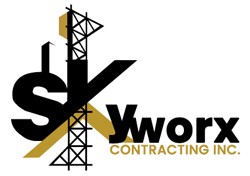Changing New York City’s Skyline: Scaffolding Companies’ Contribution
July 9, 2023Elevated Excellence: Navigating the Best Scaffolding Services in NYC
The dynamic cityscape of New York City stands as a testament to human ambition and architectural ingenuity. Amidst the towering skyscrapers and historic landmarks, the role of scaffolding, particularly the best scaffolding services in NYC, emerges as a crucial yet often underappreciated component in the construction and maintenance of these iconic structures. As construction projects continue to reach for the clouds, the choice of these top-notch scaffolding services becomes paramount in ensuring not only the efficiency of the process but also the safety of all involved.
Factors Influencing Scaffolding Choice
In the ever-evolving landscape of construction, several factors converge to shape the selection of scaffolding services in NYC. The scope and scale of the project, safety regulations, and location-specific demands all play a pivotal role in determining the most suitable scaffolding system. From ambitious high-rise constructions to delicate historic renovations, the scaffolding must adapt to the unique needs of each project.
Types of Scaffolding Systems
A diverse array of scaffolding systems cater to the multifaceted requirements of NYC’s construction endeavors. Supported scaffolding, characterized by its external framework, is the most common and versatile option. Suspended scaffolding hangs from above, ideal for projects requiring access to multiple levels. Rolling scaffolding is designed for mobility, often seen in maintenance projects. Aerial lifts and platforms have also become prevalent, enhancing worker safety and reach in challenging environments.
Best Scaffolding Services in NYC
Within the bustling city, several scaffolding service providers have risen to prominence, distinguishing themselves through innovation, expertise, and safety measures. Company A, with a reputation for height access innovations, utilizes cutting-edge technology to streamline projects efficiently. Company B specializes in complex structures, offering tailored solutions for intricate designs. Company C pioneers safety measures, incorporating advanced fall protection systems. Company D prides itself on offering customized scaffolding solutions to suit the unique demands of each project.
Evaluating Scaffolding Service Providers
Choosing the right scaffolding rental service provider entails a comprehensive assessment of factors. A company’s reputation, experience, and portfolio of previous projects serve as a testament to its capabilities. A robust safety record and commitment to ongoing training are non-negotiable criteria, ensuring the well-being of workers and compliance with regulatory standards.
Ensuring Safety and Compliance
Safety remains a paramount concern in scaffolding operations. Adhering to OSHA guidelines is non-negotiable, encompassing aspects such as proper assembly, weight limits, and fall protection. Regular inspection and maintenance protocols further guarantee the integrity of the scaffolding structure, mitigating potential risks. Harnessing advanced safety technology enhances worker well-being while improving overall operational efficiency.
Technological Advancements in Scaffolding
The digital age has revolutionized scaffolding processes, introducing tools that streamline design, planning, and execution. Digital modeling software enables precise visualization and error reduction. The utilization of lightweight yet durable materials improves efficiency while maintaining structural integrity. The integration of IoT devices allows real-time monitoring of scaffolding conditions, facilitating prompt responses to any anomalies.
Tailored Solutions for NYC Challenges
Navigating the complexities of scaffolding in NYC involves overcoming unique challenges. Limited space and urban constraints require creative design approaches to optimize scaffolding layouts. Varied weather conditions necessitate adaptations that ensure worker safety and project continuity. Preserving the historic value of iconic buildings requires delicate scaffolding strategies that harmonize with restoration efforts.
Cost-Effectiveness and Project Budgeting
Balancing quality and affordability is a pivotal consideration in the selection of scaffolding services. Transparent pricing models empower project managers to make informed decisions aligned with budget constraints. While seeking cost-effectiveness, ensuring that safety and quality standards are not compromised remains paramount.
Environmental Responsibility in Scaffolding
The construction industry’s environmental impact prompts a focus on sustainable scaffolding practices. Utilizing eco-friendly materials and minimizing energy consumption align with broader environmental goals. As the industry evolves, incorporating green practices contributes to both long-term sustainability and community well-being.
Future Trends in Scaffolding
The scaffolding industry is poised for technological advancements that will shape its trajectory. Robotics and automation integration promise increased efficiency, reduced labor requirements, and enhanced precision in scaffolding assembly and dismantling. Advancements in 3D printing hold the potential to revolutionize component fabrication, improving customization and project timelines. Augmented reality applications will aid in assembly, maintenance, and training processes, ensuring optimal scaffolding performance.
Partnering for Success: Collaboration with Scaffolding Experts
The synergy between scaffolding experts and construction teams is vital to project success. Seamless coordination ensures scaffolding integration aligns with broader construction timelines and goals. Effective communication and collaborative problem-solving minimize disruptions, fostering a harmonious workflow.
The Evolution of Scaffolding Industry in NYC
A historical perspective reveals the transformative journey of scaffolding in NYC. From rudimentary structures to intricate systems, scaffolding has evolved to facilitate the construction of architectural marvels that define the city’s skyline. The symbiotic relationship between scaffolding and architectural progress continues to shape the urban landscape.
Conclusion: Reaching New Heights with Premium Scaffolding Services
In the soaring expanse of New York City’s construction endeavors, the role of scaffolding is undeniable. Navigating the dynamic landscape requires an astute selection of scaffolding services, one that marries innovation, safety, and expertise. As projects rise to new heights, the scaffolding industry continues to elevate excellence, underpinning the construction of iconic structures that define the essence of NYC’s architectural legacy. Contact us Today!
